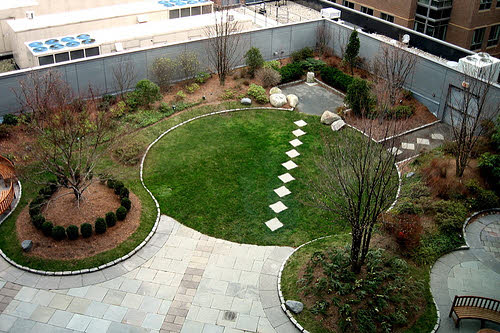Sustainability is a topic that is becoming more and more important in the minds of both business and people in general. As we learn more about environmental degradation, as well as the depletion of vital resources, we are educating ourselves more and making changes in our lifestyles so as to be more “green.”
Each year brings more and more green choices to the marketplace – from solar powered garage doors, mobile device chargers, to all natural cleaning products and clothing made from organic materials. And why many people are starting to buy organic produce, this in and of itself is not enough to create a sustainable food chain. We need diversity and we need to take advantage of all the resources available to us.
What this means is taking advantage of more than just large scale farming. One thing we are learning is that food miles are important. Food miles is the distance that your food must travel from farm to table. The fewer miles inherent in your food, the greener it will be. This has lead to a boom in farmer’s markets.
These are great resources as they allow small scale farmers from rural areas surrounding urban centers to sell their wares and it also allows people to have a more intimate relationship with their food. Supporting local agriculture and eating in season, what is available from your local area, is a great way to promote a more sustainable food chain. But these regional farm networks are likely not enough to sustain huge cities trying to go green like New York or Chicago.
Enter the rooftop and community garden. Rooftop gardens offer three main positive advantages. First, a rooftop garden utilizes previously unused space, maximizing the use of space in already crowded cities. Green rooftops make buildings more efficient – they provide insulation that helps buildings maintain comfortable temperatures while reducing the use of heating and air conditioning.
And finally, these gardens produce food that can be sold in local markets and to restaurants. Community gardens, provided by churches, cities, and other organizations are also a great endeavor. These gardens allow those who do not have the space for a garden of their own the chance to have a small plot. The food grown in these gardens is consumed locally, and the excess is often donated to good causes.
A sustainable food chain will need to be a mishmash of different types of farming from regional farming to individuals tending small community garden plots. Between regional farms, rooftop gardens, and community garden plots, the potential to create a local, sustainable food chain is a real possibility.
It means more people will be involved with the production of food, and if done organically, it will not only feed the surrounding community, but nourish the soil and reduce our impact on the planet at the same time.
Image credit: freakapotimus on flickr under a Creative Commons license


Pete Kane (@Buildingwell)
This is a great overview of the power of gardening. There is a lot of potential to expand existing community gardens and increase the amount of rooftop gardens. Part of it is education – teaching residents how easy it is to do and the numerous benefits. The other is to establish a food network – one that connects the various regional farms, community gardens and rooftop gardens so that they can support one another as well as sell their product.